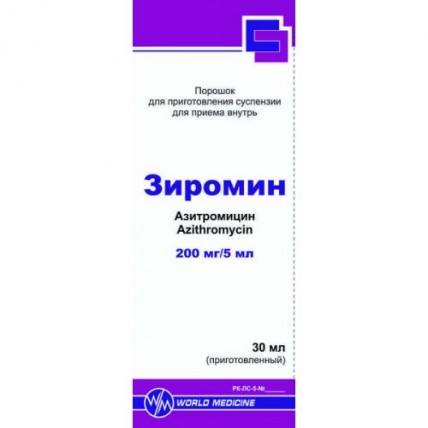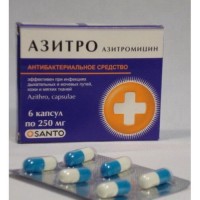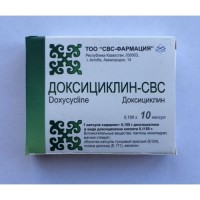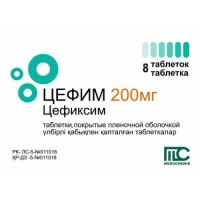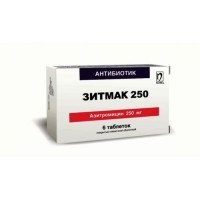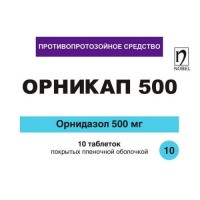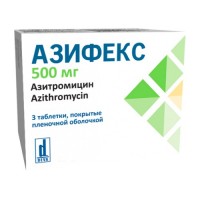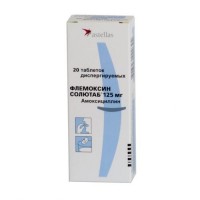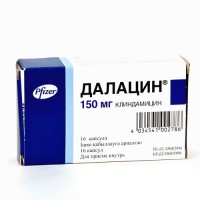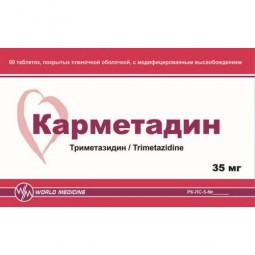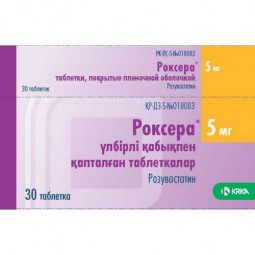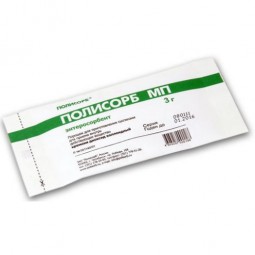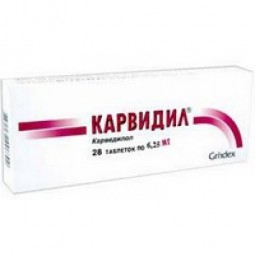Ziromin (Azithromycin) 200 mg/5 ml, 30 ml
- $16.10
Composition
5 ml of suspension contains active ingredient azithromycin dihydrate (equivalent to 50.0 mg azithromycin) 209.6212 mg
Indications for use
Treatment of diseases caused by sensitive microorganisms:
- upper respiratory tract infections (acute bacterial sinusitis, acute bacterial otitis media, pharyngitis / tonsillitis)
- infections of the lower respiratory tract (not severe during exacerbation of chronic bronchitis and communityacquired pneumonia)
- infections of the skin and soft tissues
- uncomplicated urethritis and cervicitis (caused by Chlamydia trachomatis and Neisseria gonorrhoeae).
Method of administration and dosage
Ziromin suspension is taken orally, once a day, 1 hour before or 2 hours after a meal.
The dose and duration of treatment is set according to age, weight and course of the disease.
Children and adolescents weighing more than 45 kg, adults and the elderly
For children weighing more than 45 kg and adults, including elderly patients, the total dose of Ziromin is 1500 mg, which should be taken within three days (500 mg once a day).
For uncomplicated genital infections (chlamydia), a single single dose of 1000 mg is recommended. For susceptible strains of gonococcal infection, the recommended dose is 1000 mg or 2000 mg of Ziromin in combination with 250 mg or 500 mg of ceftriaxone (in accordance with the current guidelines for the use of antibacterial drugs). For patients allergic to penicillin and / or cephalosporins, the appointment should be consulted with a physician and in accordance with local treatment guidelines.
Children and adolescents weighing less than 45 kg
There is no information on the use of azithromycin in children under 6 months of age.
The dose for children is 10 mg / kg, the drug is used as a single daily dose for 3 days.
Children weighing 15-25 kg (3-7 years): 5 ml (200 mg), once a day for 3 days.
Children weighing 26-35 kg (8-11 years old): 7.5 ml (300 mg), once a day for 3 days.
Children weighing 36-45 kg (12-14 years old): 10 ml (400 mg), once a day for 3 days.
For children weighing more than 45 kg: the dose is appropriate for adult patients.
Patients with renal impairment
Patients with mild to moderate renal impairment (glomerular filtration rate 10-80 ml / min) do not require dose adjustment.
Ziromin should be used with caution in patients with severe renal impairment (glomerular filtration rate <10 ml / min).
Patients with hepatic impairment
For patients with mild to moderate hepatic impairment, no dose adjustment is required. Since azithromycin is metabolized in the liver and excreted in the bile, the drug is contraindicated in patients with severe liver disease. There is no information available on the use of the drug for more severe liver disorders (Child-Pugh class C).
Elderly patients
In elderly patients, the same dose is used as in adults. Since elderly patients may be at risk of developing arrhythmias, special caution is advised because of the risk of developing cardiac arrhythmias and atrial fibrillation.
Suspension preparation:
To prepare 30 ml of the suspension, 15 ml of water is added to a bottle containing 1200 mg of azithromycin using a measuring cup.
The prepared suspension should be stored at a temperature not exceeding 25 ° C for no more than 5 days.
Before each intake, the contents of the bottle are thoroughly shaken until a homogeneous suspension is obtained.
To dispense the finished suspension, a measuring syringe, graduated to 5 ml, a measuring spoon, graduated to 1.25 ml, 2.5 ml and 5 ml, and a measuring cup, graduated to 15 ml, are used.
Immediately after taking the suspension, the child is given a few sips of tea or juice in order to rinse and swallow the remaining amount of the suspension in the mouth.
After use, the measuring cup and measuring spoon are washed with running water, dried and stored together with the preparation.
In case of missing one dose of the drug, the missed dose should be taken as early as possible, and the subsequent ones should be taken at intervals of 24 hours.
There is no need for courses of treatment longer than those recommended in the instructions for use.
Possible side effects
Stomach upset, diarrhea/loose stools, nausea, vomiting, or abdominal pain may occur. If any of these effects persist or worsen, tell your doctor or pharmacist promptly.
Remember that your doctor has prescribed this medication because he or she has judged that the benefit to you is greater than the risk of side effects. Many people using this medication do not have serious side effects.
Tell your doctor right away if any of these unlikely but serious side effects occur: hearing changes (such as decreased hearing, deafness), eye problems (such as drooping eyelids, blurred vision), difficulty speaking/swallowing, muscle weakness, signs of liver problems (such as unusual tiredness, persistent nausea/vomiting, severe stomach/abdominal pain, yellowing eyes/skin, dark urine).
Get medical help right away if any of these rare but serious side effects occur: fast/irregular heartbeat, severe dizziness, fainting.
This medication may rarely cause a severe intestinal condition (Clostridium difficile-associated diarrhea) due to a resistant bacteria. This condition may occur during treatment or weeks to months after treatment has stopped. Do not use anti-diarrhea or opioid medications if you have any of the following symptoms because these products may make them worse. Tell your doctor right away if you develop: persistent diarrhea, abdominal or stomach pain/cramping, blood/mucus in your stool.
Use of this medication for prolonged or repeated periods may result in oral thrush or a new yeast infection. Contact your doctor if you notice white patches in your mouth, a change in vaginal discharge, or other new symptoms.
A very serious allergic reaction to this drug is rare. However, get medical help right away if you notice any symptoms of a serious allergic reaction, including: fever that doesn't go away, new or worsening lymph node swelling, rash, itching/swelling (especially of the face/tongue/throat), severe dizziness, trouble breathing.
An allergic reaction to this medication may return even if you stop the drug. If you have an allergic reaction, continue to watch for any of the above symptoms for several days after your last dose.
Contraindications
- hypersensitivity to azithromycin, erythromycin, macrolides, ketolide antibiotics or other components of the drug
- severe violations of liver and kidney function
- lactation period
- joint administration with ergotamine derivatives (due to the theoretical possibility of ergotism)
- combined use with antacids
- rare hereditary forms of fructose intolerance, sucrase-isomaltase deficiency or glucose-galactose malabsorption syndrome (due to sucrose content)
- diabetes
- children's age up to 6 months
Drug interactions
Antacids: when studying the effect of the simultaneous use of antacids on the pharmacokinetics of azithromycin, no changes in bioavailability were noted, although the maximum the concentration of azithromycin in the blood plasma decreased by 25%. Patients should not take azithromycin and antacids at the same time.
Cetirizine: in healthy volunteers, co-administration of a 5-day course of azithromycin with cetirizine 20 mg at equilibrium did not lead to a pharmacokinetic interaction and a significant change in the QT interval.
Didanosine (dideoxyinosine): co-administration of 1200 mg / day of azithromycin 400 mg / day of didanosine in 6 HIV-positive patients, does not affect the equilibrium state of didanosine pharmacokinetics compared with placebo.
Digoxin (P-gp substrates): Concomitant use of macrolide antibiotics, including azithromycin, with P-glycoprotein substrates such as digoxin results in an increase in serum levels of P-glycoprotein substrates. Therefore, with the simultaneous use of azithromycin and P-glycoprotein substrates, such as digoxin, one should bear in mind the possibility of increasing the serum P-glycoprotein substrate concentrations.
Zidovudine: with a single use of 1000 mg and repeated use of 1200 mg or 600 mg of azithromycin, an insignificant effect on the plasma pharmacokinetics or urinary excretion of zidovudine or its glucuronide metabolites was revealed. However, taking azithromycin increased the concentration of phosphorylated zidovudine (a clinically active metabolite) in peripheral blood mononuclear cells. The clinical significance of these indicators remains uncertain, but they may be useful to patients.
Azithromycin does not interact with the liver cytochrome P450 system. It is not involved in pharmacokinetic drug interactions like erythromycin and other macrolides. Azithromycin does not induce or inactivate cytochrome P450 using the cytochrome-metabolite complex.
Ergotamine derivatives: due to the theoretical possibility of the development of ergotism, the simultaneous use of azithromycin with ergot derivatives is not recommended. Pharmacokinetic studies were performed with azithromycin and the following drugs with known cytochrome P450-mediated metabolism.
Atorvastatin: Coadministration of atorvastatin (10 mg daily) and azithromycin (500 mg daily) did not alter the plasma concentration of atorvastatin (based on HMG CoA reductase assay). However, post-marketing cases of rhabdomyolysis have been reported in patients receiving azithromycin with statins.
Carbamazepine: in a study of the pharmacokinetic interaction of azithromycin in healthy volunteers, the drug did not significantly affect the level of carbamazepine in the blood plasma or its active metabolites.
Cimetidine: No change in the pharmacokinetics of azithromycin was observed in a pharmacokinetic study examining the effect of a single dose of cimetidine taken 2 hours before azithromycin on the pharmacokinetics of azithromycin.
Coumarin oral anticoagulants: In pharmacokinetic interaction studies, azithromycin does not alter the anticoagulant effect of a single 15 mg dose of warfarin administered to healthy volunteers. In the post-marketing period, there were reports of increased anticoagulation after co-administration of azithromycin and oral coumarin anticoagulants. Although a causal relationship has not been established, the frequency of prothrombin time monitoring should be considered when prescribing azithromycin to patients receiving oral anticoagulants such as coumarin.
Cyclosporin: in a pharmacokinetic study in healthy volunteers who received 500 mg / day of azithromycin orally for 3 days, and then a single dose of 10 mg / kg of cyclosporine orally, Cmax and AUC0-5 of cyclosporin were significantly increased. Therefore, caution should be exercised before considering concurrent administration of these drugs. If co-administration of these drugs is necessary, the levels of cyclosporine should be monitored and the dose adjusted accordingly.
Efavirenz: Co-administration of a single dose of azithromycin 600 mg and 400 mg efavirenz per day for 7 days does not result in clinically significant pharmacokinetic interactions.
Fluconazole: coadministration of a single 1200 mg dose of azithromycin does not alter the pharmacokinetics of a single 800 mg dose of fluconazole. The total exposure and half-life of azithromycin did not change when co-administered with fluconazole, however, there was a clinically insignificant decrease in Cmax (18%) of azithromycin.
Indinavir: co-administration of a single 1200 mg dose of azithromycin did not have a statistically significant effect on the pharmacokinetics of indinavir administered at a dosage of 800 mg three times daily for 5 days.
Methylprednisolone: in a pharmacokinetic interaction study, azithromycin did not significantly affect the pharmacokinetics of methylprednisolone.
Midazolam: co-administration with azithromycin 500 mg / day for 3 days does not cause clinically significant changes in the pharmacokinetics and pharmacodynamics of a single dose of 15 mg of midazolam.
Nelfinavir: co-administration of azithromycin (1200 mg) and nelfinavir in equilibrium condition (750 mg three times daily) resulted in an increase in azithromycin concentration. No clinically significant side effects were observed and dose adjustment is not required.
Rifabutin: the simultaneous use of azithromycin and rifabutin did not affect the concentration of these drugs in blood plasma.
Neutropenia was detected with the simultaneous use of azithromycin and rifabutin. Although neutropenia has been associated with rifabutin use, a causal relationship with coadministration of azithromycin has not been established.
Sildenafil: There was no evidence of the effect of azithromycin (500 mg daily for 3 days) on the AUC and Cmax of sildenafil or its main circulating metabolite.
Terfenadine: No interaction between azithromycin and terfenadine has been reported in pharmacokinetic studies. In some cases, it is not possible to completely exclude the possibility of interaction. However, there was no concrete evidence that such an interaction took place.
Theophylline: There is no evidence of a clinically significant pharmacokinetic interaction between azithromycin and theophylline when used simultaneously.
Triazolam: Coadministration of azithromycin 500 mg on day 1 and 250 mg on day 2 with 0.125 mg triazolam on day 2 did not significantly affect any of the pharmacokinetic variables for triazolam compared to coadministration of triazolam and placebo.
Trimethoprim / sulfamethoxazole: Co-administration of trimethoprim / sulfamethoxazole DS (160 mg / 800 mg) for 7 days with azithromycin 1200 mg on day 7 did not significantly affect the maximum concentration, overall effect or elimination of trimethoprim or sulfamethoxazole. Serum azithromycin concentrations were similar to those observed in other studies.
Interaction of combined oral contraceptives (COCs) and broad-spectrum antibiotics: there is an "intermediate level" indicating that the contraceptive effectiveness of COCs does not depend on the joint administration (use) of azithromycin.
Special instructions
The duration of the drug should not exceed the time specified in the instructions.
Hypersensitivity
As with other macrolides, the development of rare serious allergic reactions, such as Quincke's edema and anaphylaxis (in exceptional cases with a fatal outcome), have been reported. Some of these reactions lead to the development of recurrent symptoms and require longer monitoring and treatment.
Hepatotoxicity
The liver is the main organ where azithromycin is metabolized, therefore Ziromin must be prescribed with caution in patients with severe liver disease. If signs and symptoms of liver dysfunction develop, such as rapidly developing asthenia associated with jaundice, dark urine, bleeding tendencies, or hepatic encephalopathy, liver function tests / tests should be performed immediately. With the development of liver dysfunction, taking Ziromin should be discontinued and consult a doctor.
Ergot alkaloids and azithromycin
In patients receiving ergot derivatives, the appearance of ergotism is provoked by the simultaneous administration of certain macrolide antibiotics. There is no data on the possibility of interaction between ergot derivatives and azithromycin, however, due to the theoretical possibility of the development of ergotism, azithromycin and ergot derivatives should be taken separately.
Prolongation of the QT interval
Care should be taken when using Ziromin in patients at risk of developing arrhythmias (especially in elderly patients), as well as:
- with congenital or acquired lengthening of the QT interval;
- in patients taking antiarrhythmic drugs of classes IA (quinidine, procainamide) and III (dofetilide, amiodarone and sotalol), cisapride, terfenadine, antipsychotic drugs (pimozide), antidepressants (citalopram), fluoroquinolones (moxifloxacin and levofloxacin);
- in case of violation of the water-electrolyte balance, especially in the case of hypokalemia or hypomagnesemia;
- with clinically significant bradycardia, cardiac arrhythmias or severe heart failure.
Pseudomembranous enterocolitis
As with any antibiotic, it is advisable to watch for signs of superinfection with resistant organisms, including fungi. Treatment with antibacterial drugs alters the normal gut flora, leading to overgrowth of C. difficile. Clostridium difficile diarrhea has been reported with all antibacterial drugs, including azithromycin, and can range from mild diarrhea to severe colitis. Pseudomembranous enterocolitis should be considered in all patients who present with diarrhea after antibiotic use. In these cases, a careful history taking is necessary, especially if diarrhea appeared within the first two months after using the antibacterial drug.
Streptococcal infection
Azithromycin is not the first choice for empiric treatment of infections in areas with a high prevalence of resistant strains (10% or more). In areas with a high incidence and resistance to erythromycin, it is especially important to consider the change in sensitivity to azithromycin and other antibiotics. As for other macrolides, high rates of resistance of azithromycin to Streptococcus pneumoniae (> 30%) have been reported in some European countries. This should be considered when treating infections caused by Streptococcus pneumoniae.
Renal failure
In patients with severe renal impairment (glomerular filtration rate <10 ml / min), a 33% increase in systemic exposure to azithromycin was observed.
Myasthenia gravis
The use of the drug Ziromin can provoke the development of myasthenia gravis or cause its exacerbation.
Diabetes
The drug Ziromin contains 3.9 g of sucrose in 5 ml of a diluted suspension, this must be taken into account in patients with hereditary intolerance to fructose, glucose or galactose, sucrase-isomaltase deficiency and patients with diabetes who should not take this drug.
Pregnancy
Azithromycin can be used during pregnancy only in cases where the expected benefit to the mother outweighs the potential risk to the fetus.
